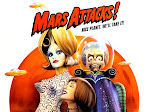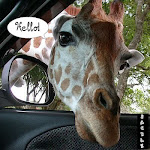

"D. discoideum tends to thrive at higher altitudes and in densely wooded areas where the soil stays moist," Gilbert said. "A Texas cattle pasture is simply the wrong type of habitat. But D. discoideum thrives on the dung of various animals, which suggests that given a good amount of rain, a cattle pasture could be the perfect place for a population explosion."
A Rice University study of microbes from a Houston-area cow pasture has confirmed once again that everything is bigger in Texas, even the single-celled stuff. The tests revealed the first-ever report of a large, natural colony of amoebae clones -- a relatively Texas-sized expanse measuring at least 12 meters across.
http://images.google.com/imgres?imgurl=http://www.ruf.rice.edu/~evolve/images/dicty%2520pics%2520from%2520OG/Dicty4.jpg&imgrefurl=http://www.ruf.rice.edu/~evolve/research.html&usg=__l3ahmFrnU8FNae_SrtqJ83aK1J4=&h=190&w=193&sz=5&hl=en&start=1&sig2=pM1ykDbj8PtOlkq7VeP0nQ&tbnid=HLpJ6WYsqo-Y8M:&tbnh=101&tbnw=103&ei=W6y8SeulKILwMrW63ZMI&prev=/images%3Fq%3Dsocial%2Bamoeba%26gbv%3D2%26hl%3Den%26safe%3Doff%26sa%3DG
In another study of the same species, finding an immune system in the social amoeba (Dictyostelium discoideum) is not only surprising but it also may prove a clue as to what is necessary for an organism to become multicellular, said the Texas Baylor College of Medicine researcher who led the research that appears in the journal Science. Dictyostelium discoideum usually exists as a single-celled organism. However, when stressed by starvation, the single cells band together to form a slug that can move. Eventually the slug changes to produce cells that perform specific functions -- spores and stalks.
In this new report, Dr. Adam Kuspa, chair of biochemistry and molecular biology at BCM, and his colleagues describe a new kind of cell they dubbed a "sentinel" cell. Sentinel cells circulate within the slug, engulfing invading bacteria and sequestering poisons or toxins, eventually eliminating these from the slug. These cells often operate through a particular mechanism in the cells controlled by a Toll/Interleukin-1 Receptor domain protein (TirA), Kuspa and his team found. This signaling pathway or a very similar one is present in plants and animals, he said. Now it has been identified in amoeba. It has not been found in fungi.
FD: If you are having trouble with what I find interesting in this bit of dung loving amoeba, look at it this way: how did multicellular organism evolve and what can we do with nano robots acting in swarms.
The dictyostelids are a group of cellular slime molds, or social amoebae. When food, normally bacteria, is readily available they are individual amoebae, which feed and divide normally. However when the food supply is exhausted, they aggregate to form a multicellular assembly, called a pseudoplasmodium or slug (not to be confused with the gastropod mollusc called a slug). The slug has a definite anterior and posterior, responds to light and temperature gradients, and has the ability to migrate. Under the correct circumstances the slug matures forming a fruiting body with a stalk supporting one or more balls of spores. These spores are inactive cells protected by resistant cell walls, and become new amoebae once food is available.
 A group of single cell organisms, band together into what acts like a single multicellular organism. Robotic and nanotechnology are looking at swarm intelligence.
A group of single cell organisms, band together into what acts like a single multicellular organism. Robotic and nanotechnology are looking at swarm intelligence.Lots of small robots or nano machines working together as a single unit. Here escaping from their pen...
 In the Nevada desert, an experiment has gone horribly wrong. A cloud of nanoparticles -- micro-robots -- has escaped from the laboratory. This cloud is self-sustaining and self-reproducing. It is intelligent and learns from experience. For all practical purposes, it is alive. It has been programmed as a predator. It is evolving swiftly, becoming more deadly with each passing hour. Every attempt to destroy it has failed. And we are the prey. As fresh as today's headlines, Michael Crichton'smost compelling novel yet tells the story of a mechanical plague and the desperate efforts of a handful of scientists to stop it. Drawing on up-to-the-minute scientific fact, Prey takes us into the emerging realms of nanotechnology and artificial distributed intelligence -- in a story of breathtaking suspense. Prey is a novel you can't put down. Because time is running out.
In the Nevada desert, an experiment has gone horribly wrong. A cloud of nanoparticles -- micro-robots -- has escaped from the laboratory. This cloud is self-sustaining and self-reproducing. It is intelligent and learns from experience. For all practical purposes, it is alive. It has been programmed as a predator. It is evolving swiftly, becoming more deadly with each passing hour. Every attempt to destroy it has failed. And we are the prey. As fresh as today's headlines, Michael Crichton'smost compelling novel yet tells the story of a mechanical plague and the desperate efforts of a handful of scientists to stop it. Drawing on up-to-the-minute scientific fact, Prey takes us into the emerging realms of nanotechnology and artificial distributed intelligence -- in a story of breathtaking suspense. Prey is a novel you can't put down. Because time is running out.






































No comments:
Post a Comment